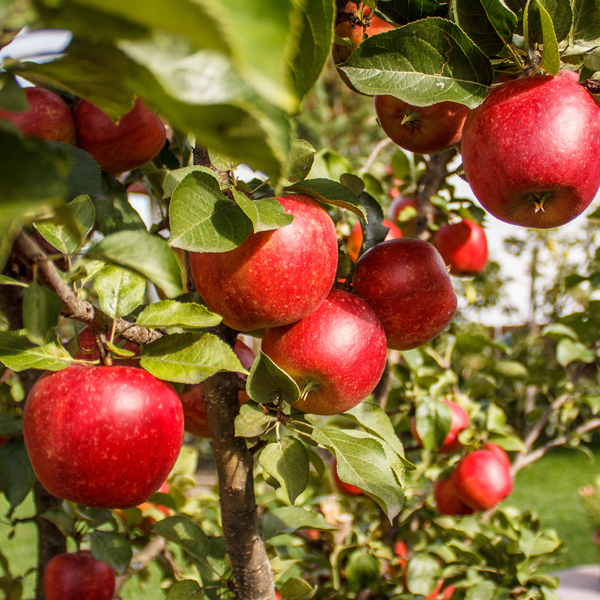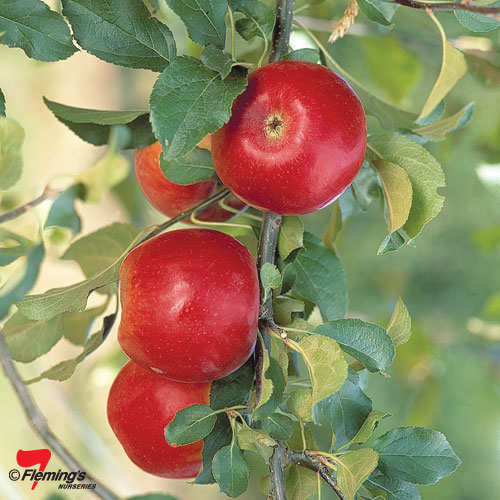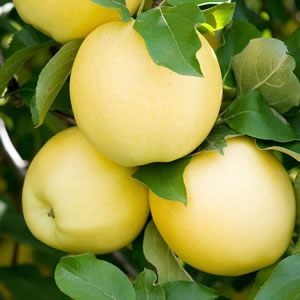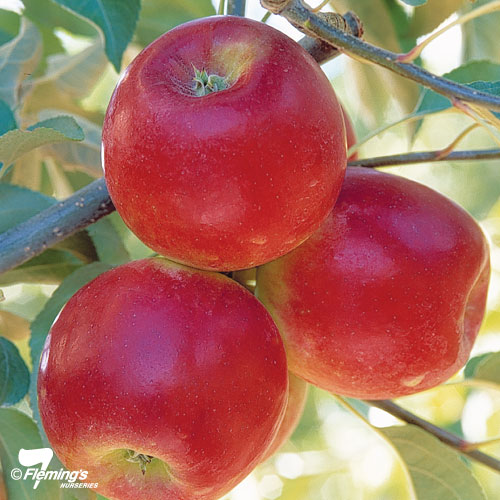Growing Apple Trees
Growing apple trees in your backyard is one of the most satisfying accomplishments for Australian gardeners.
Apple trees grow to produce beautiful, dark green leaves and pink-and-white flowers during spring. When they’re not in the harvest season, apple trees make an attractive addition to a backyard, growing between 5-10 metres in height for regular-sized trees and 3 metres for dwarf apple trees.

Apple Jonathan Treappjon
How to grow apple trees in Australia
Choose your apple tree variety
With so many varieties to choose from, the best apple trees to grow in depends on a number of factors. The climate you live in, your backyard, how acidic your soil is, and the quality of fruit you desire will all help to determine the best apple tree variety for you.
This is because they like to cross-pollinate with other cultivars to bear better fruit. If you don’t have enough space, growing dwarf apple trees may be the better option.
Many Australians have chosen the Malus Domestica, widely known as the cooking apple for their gardens. This apple tree variety bears medium-to-large red fruit that has juicy and crisp flesh. It can be grown in small gardens, courtyards, and pots while still producing full-sized, flavoursome fruit.
Climatic zones
Growing apple trees in Australia is a popular pastime for many people who live in regions with distinct warm and cold seasons. Apple trees grow best in climates that have a significant amount of sunlight hours without too much intense heat. Thriving under full-sun exposure, apple trees require 6 hours per day of sunlight, plus shelter from strong winds and extreme heat.
When to plant
Apple trees grow best when planted during the winter months. This is because there is no active growth occurring during this season, meaning your apple tree will be bare-rooted and dormant.
Soil preparation
Apple trees are adaptable and can grow in both clay and sandy soil. However, they grow best in deep soil that drains well and doesn’t become waterlogged. Apple trees grow best in soil that is a neutral pH level of approximately 6-7 and can grow in soil that is slightly acidic. If your soil’s acidity is too high or too low, your apple tree may struggle to bear an abundance of high-quality fruit.
How to plant apple trees

Apple Crimson Crisp
You can plant an apple tree in three ways, with each requiring varying levels of time and effort.
If you choose to grow an apple tree from seed, you will need to make sure that it’s germinated prior to planting. Germinating an apple seed may take up to a year. This is different to planting a young tree, which you can do straight away. Growing an apple tree from seed is a rewarding but difficult process that can take several years.
Grafting involves taking a cutting from an apple tree and making a graft cut on the tree you’d like to grow your apple variety on. Once the graft has been established on the tree, it will begin to bear fruit. This can be a complex process which is why it’s most commonly used for growing apple trees commercially.
Most gardeners choose to grow apple trees from saplings. To plant, all you need to do is transfer the sapling into your garden and give it the love and attention it needs to thrive.
Plant care
Caring for your apple tree is vital in order to grow delicious fruit.
How often you water your apple tree will depend on the type of soil it’s growing in, how old it is, and whether it’s in a pot or garden. If your apple tree is growing in clay soil, you can water it less often than if it’s growing in sandy soil. In both cases, it’s important to watch out for waterlogging, as this can cause issues for your apple tree.
Potted and young apple trees will require significantly more watering than older apple trees which have developed a hardy root system. When watering your apple tree, make sure you only water the soil surrounding the trunk to minimise the chances of bacteria and fungi starting to grow on the tree.
The best fertiliser for apple trees is mulch. Mulching the soil around your tree will help it retain moisture from watering, and keep the soil temperature regular throughout the changing seasons. Changing your mulch regularly will help to prevent fungi, bacteria, rot and decay.
When to harvest
Apples are in season from the start of summer to the start of winter. That means the best time to harvest your apples is between January and June. If you store your fruit properly, you can enjoy your apples for several months after harvest.
Types of apple trees
Garden Express stocks a range of dwarf apple trees that are best suited to smaller Australian gardens. Compact and deciduous, these dwarf apple trees grow to approximately 35-40% of regular apple trees.
Dwarf Apple Golden Delicious

– Garden Express Australia
The Dwarf Apple Golden Delicious (Malus Domestica) is one of Australia’s favourite apple varieties. It bears the perfect combination of sweet and spicy apples, making them a popular choice for cooking.
Dwarf Apple Pixie Crunch

Apple Pixie Crunch
Dwarf Apple Pixie Crunch ™ (cv.’Co-op 33) has creamy yellow skin with delicious white flesh. It is a low-maintenance apple tree that is resistant to apple scab and is one of the most popular apple trees to grow at home.
Dwarf Apple Pomme De Neige

Apple Pomme De Neige
Dwarf Apple Pomme de Neige (Malus Domestica), also known as the Snow Apple, turns bright red once ripe and is full of delicious flavours. Small in size, the Snow Apple is the perfect size for little children.
Browse our apple tree range today
Start the journey towards producing your own apples today. Browse the Garden Express range of dwarf apple trees online or fill out our online contact form to chat about the best options for your garden.






